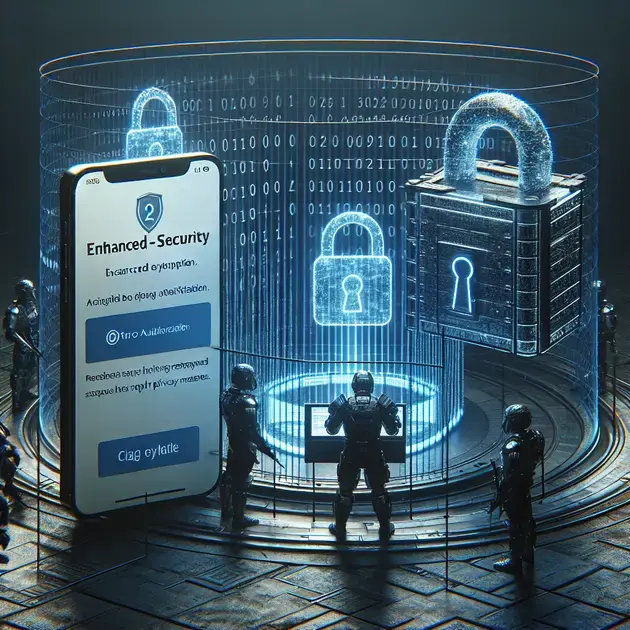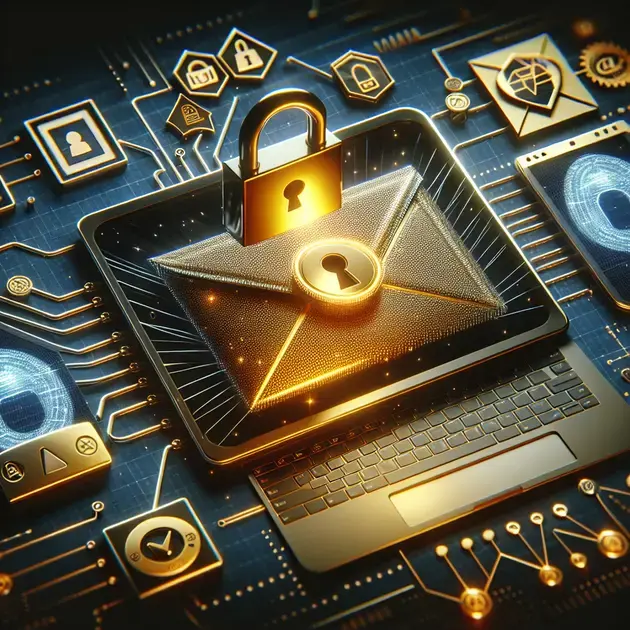In today’s digital age, safeguarding your email address has become more important than ever. With the rise of online threats such as phishing scams and data breaches, it’s crucial to take proactive steps to protect your sensitive information.
Unlocking the secrets to safeguarding your email address can help prevent unauthorized access to your accounts and keep your personal data secure. By implementing strong password protection, enabling two-factor authentication, and being cautious of suspicious emails, you can significantly reduce the risk of falling victim to cyber attacks.
Unlocking Email Security Measures
Ensuring the security of your email is crucial to protect your personal information from cyber threats. Follow these steps to enhance the security measures of your email:
1. Enable Two-Factor Authentication:
Utilize email services that offer two-factor authentication, such as Gmail or Outlook. This extra layer of security requires a verification code in addition to your password, making it harder for unauthorized users to access your account.
2. Regularly Update Your Password:
Change your email password frequently and avoid using easily guessable combinations. Consider using a password manager like LastPass or Dashlane to generate and store complex passwords securely.
3. Install Antivirus Software:
Protect your device from malware and viruses by installing reputable antivirus software like Norton or Avast. Regularly scan your system for any potential threats that may compromise your email security.
4. Be Wary of Phishing Scams:
Avoid clicking on suspicious links or providing personal information in response to unsolicited emails. Use email filtering tools like SpamTitan or Barracuda to identify and block phishing attempts.
5. Encrypt Your Emails:
Use email encryption tools like ProtonMail or Virtru to secure the content of your emails from unauthorized access. Encrypting your emails ensures that only the intended recipient can decipher the message.
Enhancing Email Privacy
Protecting the privacy of your email communications is essential to prevent unauthorized access to sensitive information. Follow these steps to enhance your email privacy:
1. Review App Permissions:
Regularly review and adjust the permissions granted to third-party apps that have access to your email. Restrict access to only essential applications to minimize the risk of data breaches.
2. Use Secure Email Services:
Choose email providers known for their commitment to privacy, such as ProtonMail or Tutanota. These services offer end-to-end encryption and strict privacy policies to safeguard your emails.
3. Avoid Public Wi-Fi Networks:
Avoid accessing your email accounts on public Wi-Fi networks, as they are vulnerable to eavesdropping and data interception. Utilize a virtual private network (VPN) like ExpressVPN or NordVPN to encrypt your internet connection.
4. Implement Email Filters:
Set up email filters to automatically sort incoming messages and prevent spam or phishing emails from cluttering your inbox. Use email clients like Thunderbird or Outlook to create custom filters based on specific criteria.
5. Secure Your Devices:
Secure your devices with passcodes or biometric authentication to prevent unauthorized access to your email accounts. Enable device encryption and regularly update your operating system and apps to patch security vulnerabilities.
Protecting Your Email Address
Keeping your email address secure and private is essential to prevent spam, phishing, and identity theft. Follow these steps to protect your email address:
1. Use Email Alias:
Create email aliases for different purposes, such as online shopping or newsletters, to prevent your primary email address from being exposed to unwanted communications. Services like Blur or AnonAddy offer alias generation features.
2. Avoid Sharing Your Email Publicly:
Avoid posting your email address on public forums, social media, or websites to minimize the risk of it being harvested by spammers. Use contact forms or encrypted messaging platforms like Signal or Telegram for communication.
3. Enable Spam Filters:
Enable spam filters provided by your email service to automatically detect and move spam emails to a designated folder. Additionally, consider using third-party spam filter tools like Clean Email or SpamAssassin for advanced protection.
4. Monitor Data Breaches:
Regularly check if your email address has been involved in any data breaches using services like Have I Been Pwned or CyberNews. If your email address is compromised, change your password immediately and implement additional security measures.
5. Opt-Out of Unsolicited Emails:
Unsubscribe from unwanted promotional emails and newsletters to reduce the exposure of your email address to potential threats. Use services like Unroll.Me or Cleanfox to easily manage and unsubscribe from mailing lists.
**Maximizing Email Security Protocols**
Email Encryption
Ensuring the security of your emails starts with implementing robust email encryption protocols. By encrypting your emails, you can protect the contents of your messages from being accessed by unauthorized parties. One of the most common methods of email encryption is using end-to-end encryption, which ensures that only the sender and the intended recipient can decrypt and read the messages.
Step-by-step guide:
1. Choose a secure email provider that offers encryption services.
2. Enable encryption settings on your email account.
3. Exchange public keys with your contacts for secure communication.
4. Regularly update your encryption software to stay ahead of potential vulnerabilities.
5. Educate yourself on best practices for email encryption to maximize your security.
Two-Factor Authentication
Adding an extra layer of security to your email accounts through two-factor authentication is essential for maximizing your email security protocols. Two-factor authentication requires you to provide two forms of verification before accessing your email account, typically a password and a unique code sent to your mobile device. This added step significantly reduces the risk of unauthorized access to your emails.
Step-by-step guide:
1. Navigate to your email account settings and locate the two-factor authentication option.
2. Enable two-factor authentication and follow the prompts to set it up.
3. Ensure that you have a secure method for receiving verification codes, such as a trusted mobile device.
4. Regularly review and update your two-factor authentication settings for maximum security.
5. Use unique and strong passwords in combination with two-factor authentication for enhanced protection.
**Fortifying Your Email Privacy**
Email Filtering and Spam Protection
Enhancing your email privacy involves implementing effective email filtering and spam protection measures. By using email filters, you can automatically sort incoming messages and prioritize important communications while blocking unwanted or suspicious emails. Additionally, robust spam protection tools can help prevent phishing attacks and malicious software from infiltrating your inbox.
Step-by-step guide:
1. Configure your email settings to enable email filtering based on sender, subject, or keywords.
2. Regularly review and update your list of blocked senders to enhance your email privacy.
3. Utilize anti-spam software or services to automatically detect and filter out spam emails.
4. Be cautious of unsolicited emails and avoid clicking on links or downloading attachments from unknown sources.
5. Educate yourself and your team on common email privacy threats to proactively protect your communications.
Data Protection and Secure Storage
Safeguarding the data within your emails is crucial for maintaining email privacy. Implementing secure storage practices, such as encrypting attachments and using password-protected archives, can prevent sensitive information from being compromised. By fortifying your email privacy with data protection measures, you can ensure that your confidential communications remain secure.
Step-by-step guide:
1. Encrypt sensitive attachments before sending them via email to prevent unauthorized access.
2. Use password-protected archives for storing and sharing confidential files securely.
3. Regularly back up your emails and data to an external encrypted storage device.
4. Implement access controls to restrict who can view and edit sensitive information within your emails.
5. Stay informed about data privacy regulations and compliance requirements to uphold the security of your emails.
**Securing Your Online Communication**
Email Authentication Protocols
Securing your online communication starts with implementing email authentication protocols to verify the legitimacy of emails sent and received. Authentication methods such as SPF (Sender Policy Framework), DKIM (DomainKeys Identified Mail), and DMARC (Domain-based Message Authentication, Reporting, and Conformance) help prevent email spoofing and domain impersonation, enhancing the security of your communications.
Step-by-step guide:
1. Configure SPF records to specify which IP addresses are allowed to send emails on behalf of your domain.
2. Set up DKIM signatures to digitally sign outgoing emails and verify their authenticity upon receipt.
3. Implement DMARC policies to instruct receiving servers on how to handle emails that fail authentication checks.
4. Monitor authentication reports and adjust your settings to optimize the security of your email communications.
5. Collaborate with your email service provider to ensure proper implementation and maintenance of authentication protocols.
End-to-End Encryption for Messaging Apps
When using messaging apps for online communication, deploying end-to-end encryption is essential for securing your conversations and shared data. End-to-end encryption ensures that only the sender and recipient can decrypt the messages, providing a high level of privacy and security. By utilizing messaging apps that offer end-to-end encryption, you can protect your online communication from interception and unauthorized access.
Step-by-step guide:
1. Choose a messaging app that supports end-to-end encryption for secure communication.
2. Verify that the encryption feature is enabled and functioning correctly within the app.
3. Share encryption keys with trusted contacts to establish secure communication channels.
4. Avoid sharing sensitive information or personal data through unsecured messaging platforms.
5. Regularly update your messaging app to incorporate the latest security enhancements and encryption protocols.
Conclusion
In conclusion, maximizing email security protocols is crucial in safeguarding your online communication. Implementing robust email encryption, utilizing two-factor authentication, and fortifying email privacy measures are key steps in enhancing the security of your emails. By securing your online communication channels with email authentication protocols and end-to-end encryption for messaging apps, you can significantly reduce the risks of unauthorized access and maintain the privacy of your sensitive data.
By following the step-by-step guides provided for each security measure, you can establish a comprehensive framework to protect your emails from potential threats. Educating yourself and your team on best practices for email security, staying informed about data privacy regulations, and regularly updating your security settings are essential components of a proactive approach to securing your online communication.
Remember, safeguarding your email privacy requires a multi-layered approach that encompasses encryption, authentication, data protection, and awareness of common threats. By incorporating these security measures into your email practices and staying vigilant against potential risks, you can create a safe and secure environment for your online communication.

